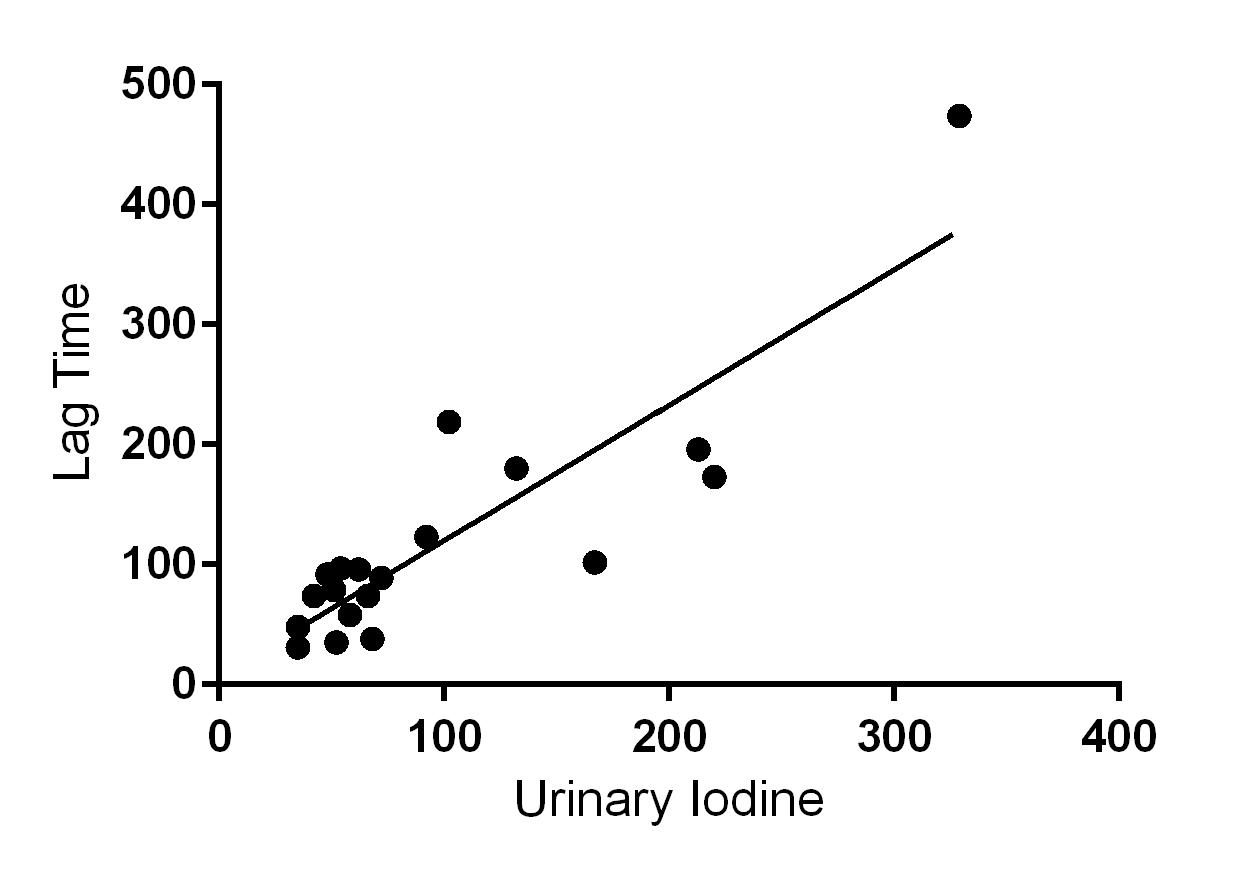Oral Presentation Annual Meetings of the Endocrine Society of Australia and Society for Reproductive Biology and Australia and New Zealand Bone and Mineral Society 2016
Urinary iodine as a predictor of lag-time to hypothyroidism in patients treated with iodine-131 for grave’s disease (#261)
Background:
Radioactive iodine (I-131) is commonly used to treat patients with Grave’s Disease. The rapidity at which hypothyroidism occurred following I-131 varied greatly between patients. Studies have shown that low iodine status was associated with higher rate of success of I-131 ablation in patients with thyroid carcinoma. The role of low iodine status in patients undergoing I-131 therapy for Graves' disease is unclear.
Methods:
A retrospective cohort study of patients with Grave’s Disease receiving RAI therapy was carried out. The urinary iodine concentration (mcg/L) was measured prior to their I-131 dose. All patients had 15 millicurie(mCi) of RAI, except for one patient who had 10mCi. Thyroid function tests were performed 6 weeks after the dose, and 3 monthly thereafter. The lag-time when hypothyroidism first developed for each patient was documented. Hypothyroidism was defined when TSH>10mIU/L. Linear regression models were applied to the data.
Results:
Nineteen patients were recruited, and all except one were treated with carbimazole before I-131. The mean age was 47.1±9.4 years. There were 5 male and 14 females, and 3 subjects were smokers. Prior to RAI, mean TSH was 0.34±0.57mIU/L, mean fT4 was 16.74±5.16pmol/L, mean fT3 5.94±2.62pmol/L and mean TRAb 6.10±4.91IU/L. The median urinary iodine was 66mcg/L (interquartile range, 51-132mcg/L) with a median lag-time of 92 days until hypothyroidism developed (interquartile range, 58-180 days). A linear model found a strong correlation between lag-time for hypothyroidism and urinary iodine (R2=0.7666, p < 0.0001). There was no association between lag-time for hypothyroidism and other parameters including age, free T4 and TRAb.

Conclusion:
In our cohort, we found that low urinary iodine (and relative iodine deficiency) was associated with shorter lag-time in achieving hypothyroidism in patients treated with I-131. This may be useful in predicting the time frame when patients develop hypothyroidism and subsequently require thyroxine.